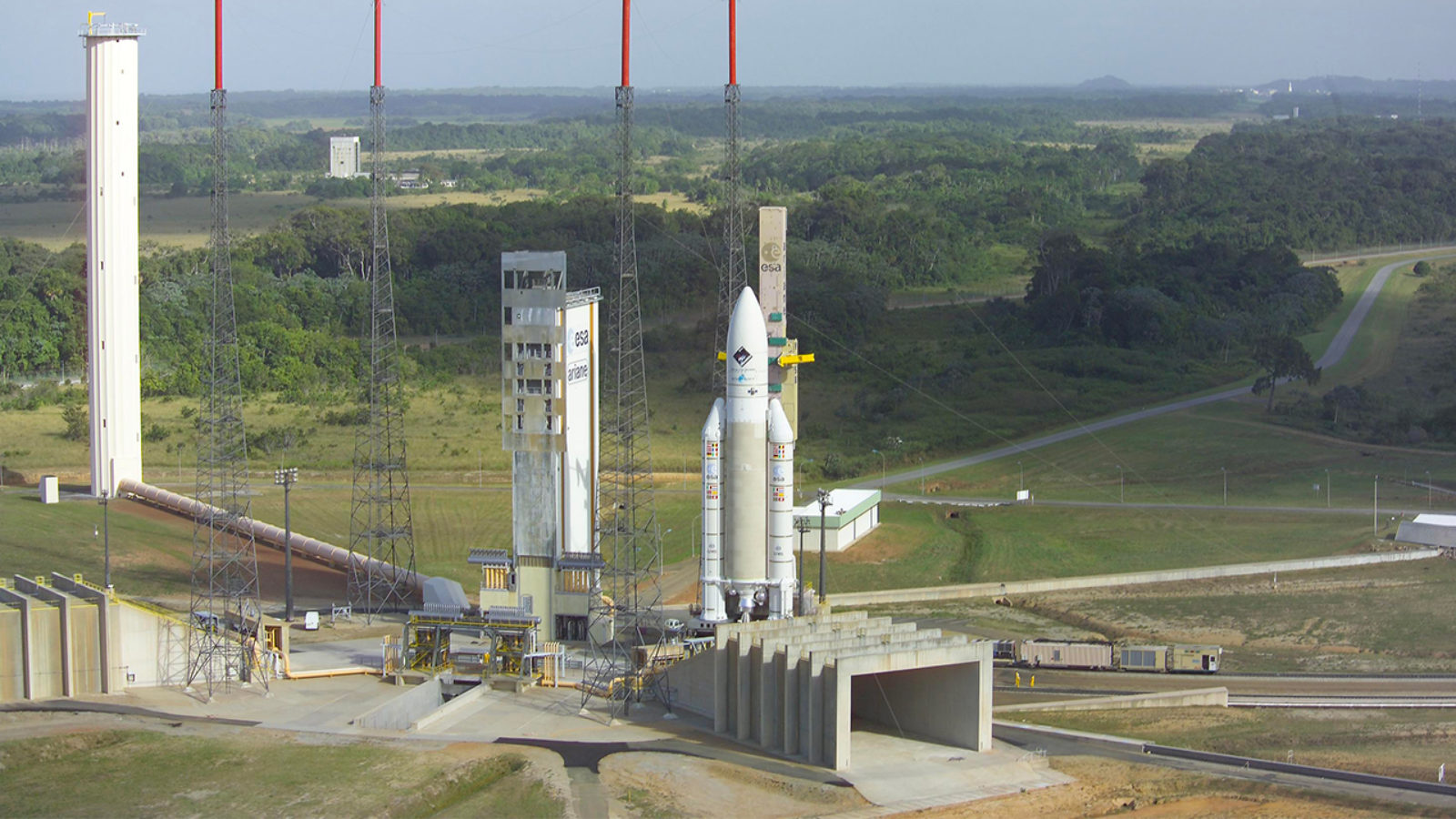
Rotate your tablet
for a better experience


Rotate your tablet
for a better experience

Ariane 5: 27 years on the job and over 100 successful launches. Ariane 5 lifted off for the final time on July 4. We’ll be looking back at some of its most significant missions.
On March 2, 2004 at 8h17, the European Rosetta probe set off from the European spaceport in Kourou, French Guiana, on an Ariane 5 launcher, for a 10-year mission to comet 67P/Churyumov-Gerasimenko. Let’s dive deeper into this extraordinary mission.

©ESA ©CNES ©ARIANESPACE ©ARIANEGROUP ©SERVICE OPTIQUE
Rosetta was the first spacecraft to orbit a comet and set down a lander on its surface.
The main aim of this European Space Agency (ESA) flagship mission was to study the activity of Comet 67P/Churyumov-Gerasimenko over time as it approached the Sun.
Ariane 5’s launch of Rosetta was a very special mission because, for the first time, the launcher had to achieve the escape velocity needed to break free of Earth’s gravity – nearly 40,000 km/h – so that its passenger could be propelled to the depths of the solar system.
The new 5G+ version of Ariane 5 was equipped with a modified upper stage with a delayed ignition capability, so that this unique mission could be successfully sent on its way.
After it separated from the main stage, the EPS upper stage, with Rosetta on-board, initiated an unpowered ballistic flight phase of about two hours. It then ignited its motor for 16 minutes, accelerating to 37,476 km/hour, enabling it to exit the Earth’s gravity field and enter a heliocentric orbit. About fifteen minutes later, the probe separated from the launcher stage to head off on its long journey.

©ESA ©CNES ©ARIANESPACE ©ARIANEGROUP ©SERVICE OPTIQUE
In August 2014, after a journey of 10 years and about 6 billion kilometers, during which it studied the many asteroids it passed along the way, Rosetta entered orbit around 67P/Churyumov-Gerasimenko and for the next two years proceeded to conduct the most complete study ever made of a comet. On November 12, 2014, it released a small lander, Philae, which touched down on the surface of the comet to analyze the composition of its surface and structure.
This historic ESA mission ended as planned on September 30, 2016 with a controlled impact by Rosetta on the comet’s surface.
On-mission to the very end, Rosetta used its final descent to study the gases, dust and plasma in direct proximity to the surface of the comet and took very high-resolution pictures.
Today, nearly 10 years after the end of the mission, scientists are still analyzing the wealth of data meticulously collected by Rosetta.

©ESA/Rosetta/NAVCAM – CC BY-SA IGO 3.0
Among the surprising discoveries made by the mission was the fact that the composition of water on comet 67P/Churyumov-Gerasimenko is very different from that found on Earth, thus fueling the debate on the role played by comets and asteroids in the origin of water on Earth; two “essential ingredients of life on Earth”, the amino acid glycine, and phosphorus, a key component of DNA, were clearly detected. Rosetta surely has much more to tell us…
All of this was made possible by Ariane 5’s impeccable launch of Rosetta on March 2, 2004, paving the way for this fascinating adventure.